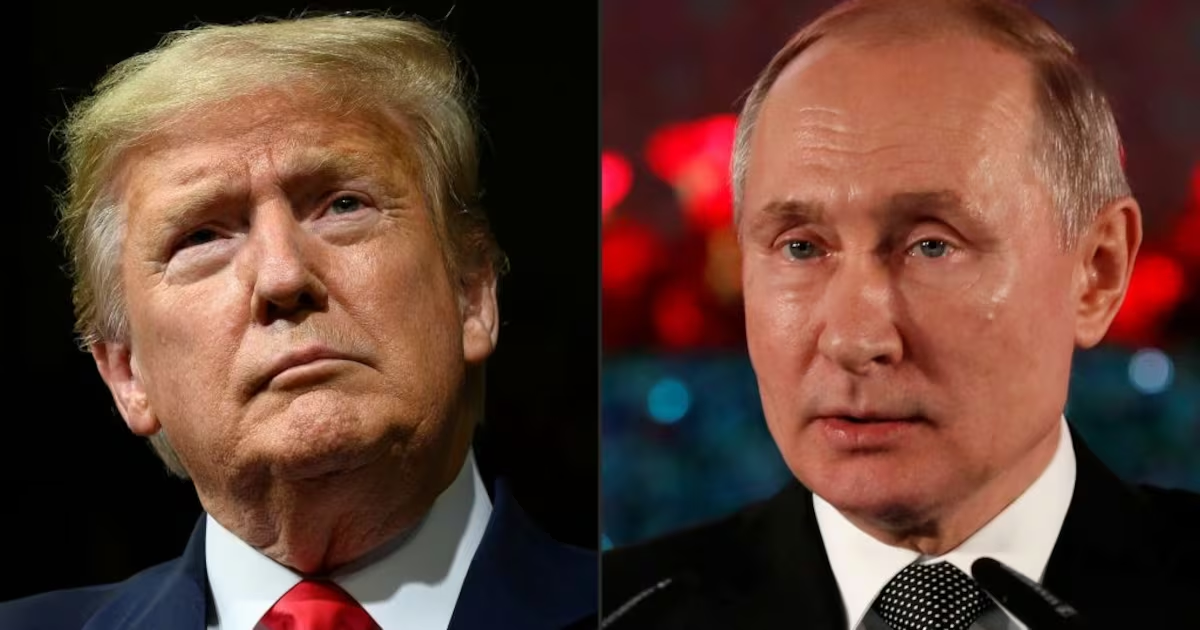When Vladimir Putin announced a brand new globe-spanning missile powered by a mini reactor last year, it was supposed to be a crown jewel for Moscow’s military. But as President Trump tweeted late Monday, it’s increasingly looking like one of those missiles exploded during testing. So whose bright idea was it to slap a nuclear reactor on the back of a nuclear missile, why is Russia making one, and just how viable is a nuke-powered missile?
Welcome to Rabbit Hole.
Wait, there’s a nuclear reactor-powered missile? Kind of. The missile, dubbed the 9M730 Burevestnik (or “petrel” in English), is designed to carry a warhead—nuclear or conventional—around the globe and dodge American missile defenses. (NATO refers to the missile by a name more befitting its James Bond movie aura: Skyfall.) Putin hailed the weapon as a “a low-flying stealth missile carrying a nuclear warhead, with almost an unlimited range, unpredictable trajectory and ability to bypass interception boundaries.”
So what was wrong with normal cruise missiles that the Russians felt they needed to go Dr. Strangelove and slap a reactor on the back of it? Range. To reach out and smack the U.S., you usually need a big, intercontinental ballistic missile-sized weapon. By contrast, the Skyfall’s nuclear engine is supposed to let it span the globe with a smaller, more mobile, and hard-to-find size.
Secrets, lies, and radioactivity: Until the weekend, as best the rest of the world knew, Moscow’s work on the Skyfall was proceeding without a hitch until Russian authorities announced an explosion at a missile facility along its Barents Sea coast. Russia’s defense ministry said that seven people had died “during a test of a liquid propellant jet engine” and the Tass news agency noted a spike in radiation in nearby Severodvinsk. Russian officials didn’t announce what kind of missile was involved in the accident, but normal liquid engine fuel doesn’t cause radiological incidents.
Open source clues: Fabian Hinz, a research associate at the Middlebury Institute of International Studies, spent the weekend working with colleagues to track down hints of what kind of missile may have been responsible for the explosion. “So far, the published data, geospatial signatures as well as our research including maritime tracking and social media all point towards, are all consistent with yet another failed test of Russia's Burevestnik nuclear-powered cruise missile,” he told The Daily Beast.
The radiological clues were among the most obvious. Among the seven people killed in the accident were employees of the Sarov Russian Federal Nuclear Center. Rosatom, Russia’s state-run corporation which works on civilian and military nuclear technology, said that the work involved “a liquid propulsion system involving isotopes.” Hinz and others also noted that the Serebryanka, a Russian ship designed for carrying nuclear fuel which had been spotted at the scene of previous Skyfall tests, was parked in the waters off of Severodvinsk at the time.
Confirmation by tweet: By late Monday night, President Trump effectively confirmed what the open source hints already pointed to: “The Russian ‘Skyfall’ explosion has people worried about the air around the facility, and far beyond. Not good!” he wrote.
The boss ain’t gonna like this: It always embarrassing when something blows up. It’s especially embarrassing when that something is radioactive and you tried to cover it up. But when your dictator boss held up the thing that just blew up as a top priority for your military, things can get unpleasant.
The Skyfall was supposed to be a prestige piece for Russia. Vladimir Putin announced it along with a host of other strategic weapons during a March 1, 2018 speech framed as a response to America’s withdrawal from a key missile defense treaty. The Skyfall, Putin said, would be “invincible against all existing and prospective missile defense and counter-air defense systems.”
Backed into a corner: It’s unclear whether or not the accident is a sign that the Skyfall will have future problems or if it’s just a one-off accident. In either case, Putin’s decision to trumpet the missile as a cornerstone of Russian prowess with his personal imprimatur has backed Putin into something of a public relations corner in the event of future troubles.
“That makes it harder to change course on the program, and each failure that much more important to hide,” Thomas Moore, a former staffer on the Senate Foreign Relations Committee who worked on Russian nuclear weapons issues, told The Daily Beast. Other problems could include the availability of launch platforms, according to Moore. It’s unclear how Russia plans to launch the missiles but demonstrations thus far have all featured variants of Russia’s MiG-31 interceptor jet. “While not large, or hard to do, tactical aircraft as launchers of nuclear weapons pose specific challenges. Depending on things like future heavy bombers, all of these March Weapons may find themselves orphans alongside bigger programs of certain deterrence value, rather than just scary messengers. But Putin would have to make that call,” said Moore.
Cash crunch: Russia doesn’t have tons of cash lying around to fix problematic programs or avoid tough tradeoffs. As we’ve all been told by now, Putin is all about trying to reassert Russia as a diplomatic and military power on the world stage. Military power, however, requires cash, and Western sanctions after Moscow’s invasion of Ukraine coupled with less than stellar oil prices—normally a big earner for the Russian treasury—have gobbled up a lot of the money Putin was hoping to use to modernize Russia’s military.
These were supposed to be the years when Russia would modernize its military hardware to catch up with the West, but instead the Russian defense ministry has had to cut budgets and drop from the ranks of the top five biggest defense spenders on the planet. It had to scale back plans for big modernization projects, like the T-14 Armata tank, and slowed development of its Su-57 stealth fighter jet.
Cold War pedigree: It’s not a new Cold War unless we get the same harebrained Wile E. Coyote weapons ideas that made the 20th century a paradise for mad scientists. American weapons engineers briefly toyed with the idea of slapping a nuclear reactor on board an Air Force bomber in the 1950s. The project, known as the Nuclear Test Aircraft, envisioned aircraft like a converted B-52 bomber and a “Continuous airborne missile launcher and low level weapons system” (CAMAL) flying around the earth for long periods and raining down nuclear weapons on the Soviets in the event of a war. In that sense, the Skyfall missile is just a shrunken down, unmanned version of the wild ideas first dreamed up by American weapons scientists.
Apocalypse by ACME: Nor is the Skyfall the only Cold War-style weapon which Russia has been working on lately. Another one of the weapons announced in Putin’s March 2018 speech is the Status 6, a long range torpedo (or drone, depending on how you like to think of it) designed to poison America’s coastal waters with radioactive sludge—essentially an underwater dirty bomb. Russia first let news of the Status 6 out when news cameras “accidentally” captured a glimpse of blueprints for the weapons in the hands of Russian senior military officers. A leaked draft of the Trump administration’s Nuclear Posture Review—a government-wide study of U.S. nuclear weapons—in 2017 showed that the U.S. government believed the tentative plans for the Status 6 involved a massive 600 megaton nuclear warhead and a hoped-for range of 10,000 kilometers.
Fortunately, there’s been no reports of an accident with the Status 6—yet.






